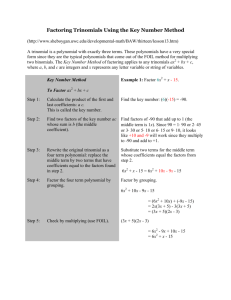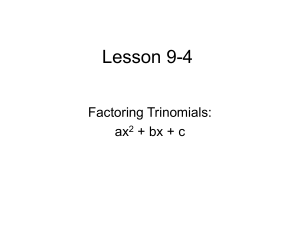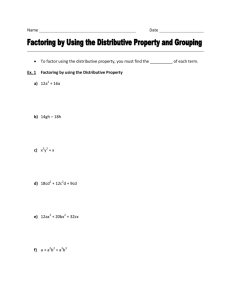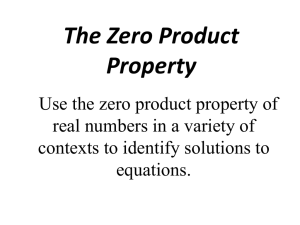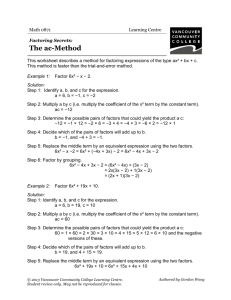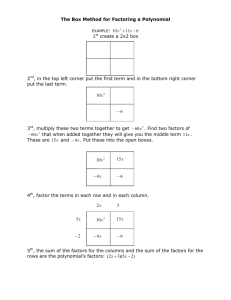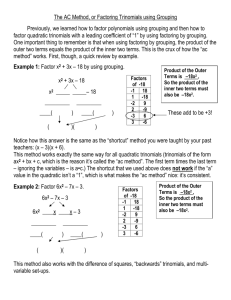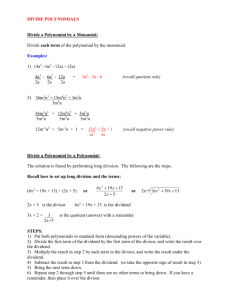Factoring Trinomials by Grouping The process of factoring by
advertisement
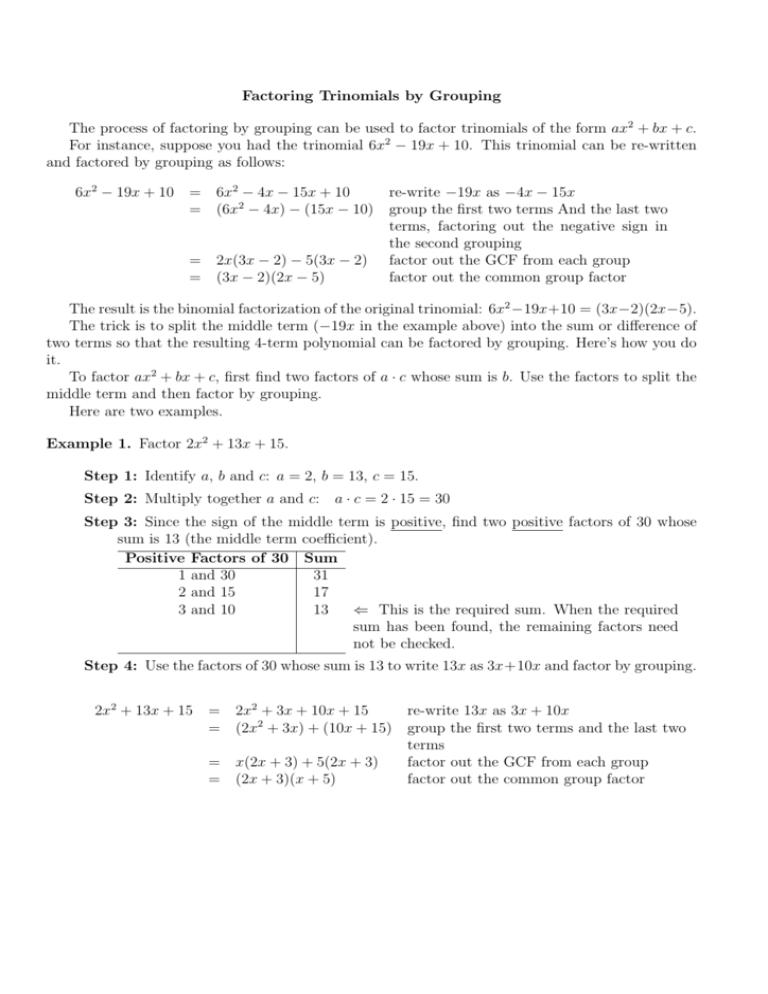
Factoring Trinomials by Grouping The process of factoring by grouping can be used to factor trinomials of the form ax2 + bx + c. For instance, suppose you had the trinomial 6x2 − 19x + 10. This trinomial can be re-written and factored by grouping as follows: 6x2 − 19x + 10 = 6x2 − 4x − 15x + 10 re-write −19x as −4x − 15x 2 = (6x − 4x) − (15x − 10) group the first two terms And the last two terms, factoring out the negative sign in the second grouping = 2x(3x − 2) − 5(3x − 2) factor out the GCF from each group = (3x − 2)(2x − 5) factor out the common group factor The result is the binomial factorization of the original trinomial: 6x2 −19x+10 = (3x−2)(2x−5). The trick is to split the middle term (−19x in the example above) into the sum or difference of two terms so that the resulting 4-term polynomial can be factored by grouping. Here’s how you do it. To factor ax2 + bx + c, first find two factors of a · c whose sum is b. Use the factors to split the middle term and then factor by grouping. Here are two examples. Example 1. Factor 2x2 + 13x + 15. Step 1: Identify a, b and c: a = 2, b = 13, c = 15. Step 2: Multiply together a and c: a · c = 2 · 15 = 30 Step 3: Since the sign of the middle term is positive, find two positive factors of 30 whose sum is 13 (the middle term coefficient). Positive Factors of 30 Sum 1 and 30 31 2 and 15 17 3 and 10 13 ⇐ This is the required sum. When the required sum has been found, the remaining factors need not be checked. Step 4: Use the factors of 30 whose sum is 13 to write 13x as 3x+10x and factor by grouping. 2x2 + 13x + 15 = 2x2 + 3x + 10x + 15 = (2x2 + 3x) + (10x + 15) = = x(2x + 3) + 5(2x + 3) (2x + 3)(x + 5) re-write 13x as 3x + 10x group the first two terms and the last two terms factor out the GCF from each group factor out the common group factor Math 65B, Factoring Trinomials by Grouping, p.2 Here is an example with negative terms. Example 2. Factor 6x2 − 11x − 10. Step 1: Identify a, b and c: a = 6, b = −11, c = −10. Step 2: Multiply together a and c: a · c = 6 · (−10) = −60 Step 3: Find two factors of −60 whose sum is −11 (the middle term coefficient). Note that this time one of the factors will be positive and the other will be negative because the constant term is negative. Factors of −60 1 and −60 −1 and 60 2 and −30 −2 and 30 3 and −20 −3 and 20 4 and −15 Sum −59 59 −28 28 −17 17 −11 ⇐ This is the required sum. When the required sum has been found, the remaining factors need not be checked. Step 4: Use the factors of −60 whose sum is −11 to write −11x as −15x + 4x and factor by grouping. 6x2 − 11x − 10 = 6x2 − 15x + 4x − 10 re-write −11x as −15x + 4x = (6x2 − 15x) + (4x − 10) group the first two terms and the last two terms = 3x(2x − 5) + 2(2x − 5) factor out the GCF from each group = (2x − 5)(3x + 2) factor out the common group factor Now you try one. Factor 12y 2 − 7y + 1 . Note that the constant term is positive and the middle term is negative, so both factors of a · c will be negative.

